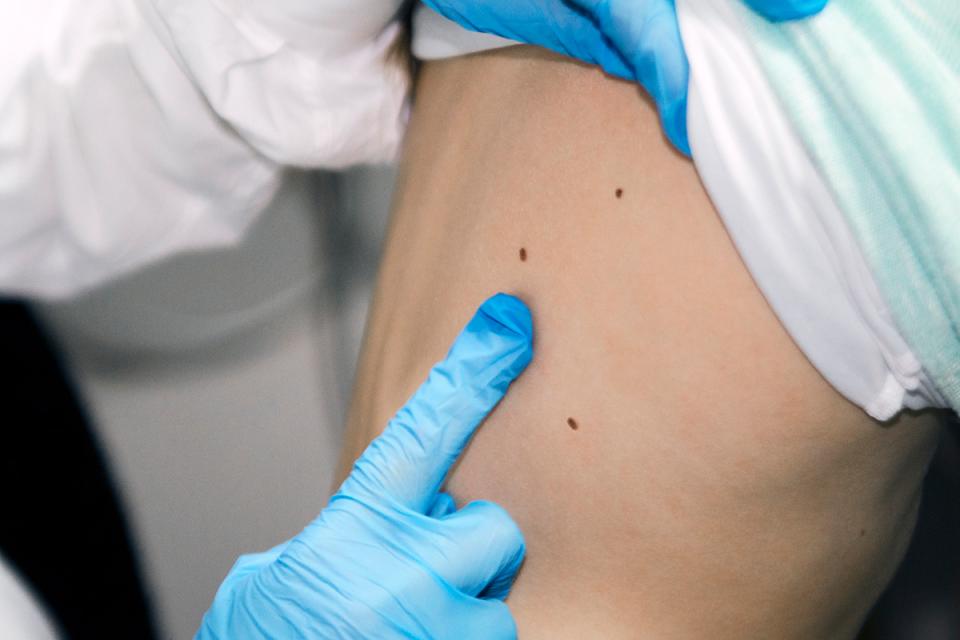Skin cancer screening process
A skin cancer screening is a visual inspection of your skin by a board-certified dermatologist. The screening usually takes 10 minutes or longer if the provider sees any moles that look unusual. You’ll undress and put on a medical exam gown. Your provider will ask if you have any spots that concern you. Then, they will look at every inch of your body – from your face, chest, arms, back and legs, to less-visible places like your scalp, between your toes and the soles of your feet.
Check your skin
It is possible to perform a self-skin exam. Although this does not replace a regularly scheduled skin cancer screening with a dermatologist, a self-skin exam can be a great way for you to be proactive and document any suspicious moles or marks. They can then be reported to your dermatologist to be examined.
To perform a self-skin exam, use a full-length mirror to document moles on your body, so you can easily detect any changes. A hand mirror is useful for checking your scalp, neck and back. Remember, skin cancer can form anywhere on the skin, not just in sun-exposed areas. If you see something unusual, please contact your dermatologist.
Reduce your risk
Applying sunscreen every day reduces the risk of developing skin cancer. This is especially important in Arizona. Dermatologists recommend using a broad-spectrum UVA/UVB SPF 30 sunscreen. There are many brands available, so pick a sunscreen that you enjoy using. Make it a habit by applying sunscreen every day, even when you are staying indoors. UV rays can still penetrate your skin while you are in your car or through the windows in your house and accelerate aging in the skin.
By wearing sunscreen and scheduling annual skin cancer screenings, you can help minimize your risk and catch any cancerous spots early, when they’re easier to treat.
Teledermatology
Over the past few years, virtual healthcare visits have become more prevalent. Teledermatology is good for medication refills, as well as acne and rosacea concerns, but you should check with your dermatologist to see how they prefer to use virtual visits to complement their regular services. A skin cancer screening must be performed in office. An occasional check of a suspicious mole can be done virtually, but it’s not recommended.
Sunburn be gone
Your sunburn is more than just a summer souvenir — it’s your skin signaling UV damage. Learn how to protect yourself with these expert tips and enjoy the sun safely while keeping your skin healthy.
Sizzle-free skin
Ready to enjoy the sun? This insightful Q&A offers expert tips on sunscreen, sun protection and when you should see a dermatologist — keeping your skin safe while you bask in the sunshine.
Essential skin cancer truths
Your skin is your canvas — keep it healthy and glowing with these eight key tips from our expert dermatologists. Protect it from damage, care for it daily and it will thank you.
